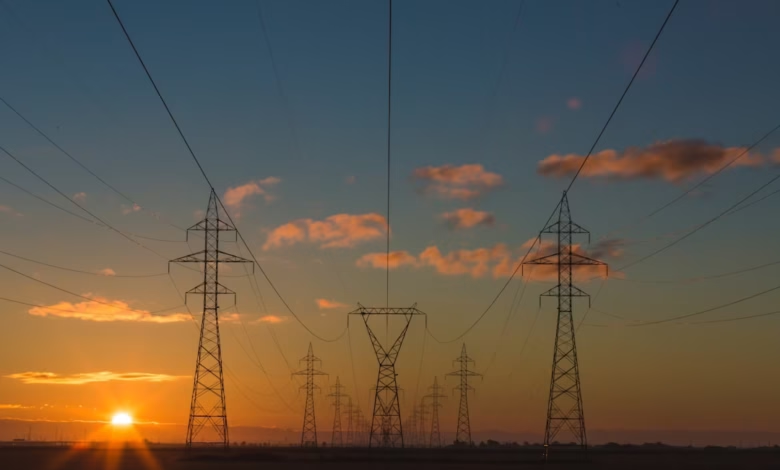Navigating the Future: The Role of Fossil Fuels in Global Energy Markets and the Transition to Renewable Energy

As the world grapples with the pressing challenges of climate change and energy security, the role of fossil fuels—oil, coal, and natural gas—remains at the forefront of global energy discussions. Despite the growing emphasis on renewable energy sources such as solar power, wind energy, and hydropower, fossil fuels continue to dominate energy markets, driving both production and consumption on a massive scale. This article delves into the intricate balance of fossil fuel production and consumption, examining how these energy sources influence energy policy and global energy trends.
We will explore the ongoing energy transition, highlighting the shift from fossil fuels to greener alternatives and the innovative technologies paving the way for a sustainable future. From advancements in energy efficiency and carbon capture to the rise of smart grids and energy storage, we will assess how these innovations are reshaping the landscape of energy economics. Furthermore, we will consider the impact of energy exports and imports on global energy markets, and how the integration of distributed energy systems and hydrogen energy is transforming our approach to energy R&D. Join us as we navigate the complexities of fossil fuels in the context of a rapidly evolving energy landscape, and discover pathways toward a more sustainable and resilient energy future.
- 1. The Role of Fossil Fuels in Global Energy Markets: Balancing Production and Consumption
- 2. Energy Transition: The Shift from Fossil Fuels to Renewable Energy Sources
- 3. Innovations in Energy Efficiency and Carbon Capture: Paving the Way for a Sustainable Future
1. The Role of Fossil Fuels in Global Energy Markets: Balancing Production and Consumption
Fossil fuels, comprising oil, coal, and natural gas, have long been the backbone of global energy markets, providing the majority of the world's energy needs. Their role in balancing production and consumption cannot be understated, especially as nations navigate the complexities of energy security and climate change. As the demand for energy continues to rise, fossil fuels remain critical in meeting immediate energy needs while transitioning to more sustainable sources.
The interplay between fossil fuel production and consumption is shaped by various factors, including geopolitical dynamics, energy policy, and technological advances. For instance, countries rich in fossil fuel reserves often leverage energy exports as a significant component of their economies. This reliance on fossil fuels creates a delicate balance between maintaining energy security and pursuing a cleaner energy future.
However, the global energy landscape is shifting as renewable energy sources gain traction. Innovations in solar power, wind energy, and hydropower are reshaping energy markets, prompting investments in energy storage and energy efficiency technologies. While fossil fuels continue to dominate, the urgency of the energy transition is evident in the increasing adoption of nuclear energy and bioenergy, which offer lower carbon footprints.
To facilitate this transition, carbon capture technologies are being integrated into fossil fuel production processes, allowing for a reduction in greenhouse gas emissions. Additionally, the development of smart grids enhances energy management and distribution, enabling a more flexible energy ecosystem that integrates distributed energy resources, including renewable energy sources.
As we look toward the future, energy economics will play a crucial role in determining how fossil fuels coexist with emerging energy innovations. The balance between fossil fuel consumption and renewable energy adoption will be pivotal in shaping global energy trends. Policymakers must navigate this landscape carefully, fostering an environment conducive to energy investment while ensuring energy transportation remains efficient and sustainable.
In conclusion, fossil fuels will continue to play a critical role in global energy markets, but the path forward lies in fostering a harmonious balance between these traditional energy sources and the increasing demand for green energy solutions. The ongoing energy transition, influenced by technological advancements and changing energy policies, will ultimately define the future of energy consumption and production.
References:
– International Energy Agency. (2023). World Energy Outlook 2023.
– U.S. Energy Information Administration. (2023). Annual Energy Outlook 2023.
– United Nations. (2023). Climate Change and Energy Transition: The Role of Renewable Energy.
– World Energy Council. (2023). Global Energy Trends and Innovations.
2. Energy Transition: The Shift from Fossil Fuels to Renewable Energy Sources
The energy transition is a critical movement towards reducing reliance on fossil fuels and embracing renewable energy sources. As global energy trends shift, the focus is on creating a sustainable energy future that enhances energy security while addressing climate change. This transition involves a concerted effort to replace traditional energy sources—such as oil, coal, and natural gas—with greener alternatives like solar power, wind energy, hydropower, and bioenergy.
One of the driving forces behind this energy transition is the need for energy efficiency. Improved energy efficiency reduces overall energy demand, allowing for a smoother integration of renewable energy into existing energy markets. Innovations in energy storage technologies are also pivotal, as they enable the capture and utilization of energy generated from intermittent sources like solar and wind. This not only stabilizes the grid but also enhances the viability of distributed energy systems, which decentralize energy production and consumption.
Nuclear energy remains a significant component of the energy transition due to its ability to provide stable, low-carbon thermal energy. Coupled with advancing carbon capture technologies, nuclear power can play a vital role in minimizing emissions while supporting the shift away from fossil fuels. Furthermore, the development of hydrogen energy presents exciting possibilities for energy transportation and storage, offering a clean fuel alternative for sectors difficult to electrify, such as heavy industry and long-haul transportation.
Energy policy is essential in guiding the transition, with governments worldwide investing in renewable energy projects, smart grids, and energy R&D. These initiatives not only foster energy innovations but also attract energy investment, facilitating the growth of offshore energy and electric vehicle infrastructure. As nations work to balance energy imports and exports, the focus on green energy sources becomes increasingly critical in achieving sustainability goals.
In summary, the energy transition from fossil fuels to renewable energy is a multifaceted process that requires collaboration across various sectors and disciplines. By prioritizing investments in renewables, enhancing energy efficiency, and promoting innovative technologies, we can create a resilient energy future that supports both economic growth and environmental sustainability.
3. Innovations in Energy Efficiency and Carbon Capture: Paving the Way for a Sustainable Future
As the world grapples with the pressing challenges of climate change and energy security, innovations in energy efficiency and carbon capture are emerging as critical components in the transition towards a sustainable future. These advancements not only aim to reduce reliance on fossil fuels but also enhance the viability and competitiveness of renewable energy sources like solar power, wind energy, and hydropower.
Energy efficiency is at the forefront of this shift, driving down consumption while maintaining productivity. Smart grids play a pivotal role in optimizing energy distribution and reducing waste by utilizing real-time data to manage energy flows. This technology allows for improved integration of renewable energy into existing systems, thereby facilitating a more resilient energy market. Furthermore, energy storage solutions, such as batteries and thermal energy systems, enable the effective use of intermittent energy sources, ensuring a steady supply even when production is low.
Carbon capture technologies are also making significant strides. By capturing and storing carbon emissions produced during fossil fuel combustion, these innovations help mitigate the negative impacts on climate change. The development of direct air capture systems and enhanced oil recovery techniques are examples of how carbon capture can be tied into existing fossil fuel operations, allowing for a more gradual energy transition while maintaining energy security.
In addition, investments in hydrogen energy are gaining traction as a clean alternative to traditional fossil fuels. Hydrogen can be produced through renewable methods and used in various applications, from powering electric vehicles to providing energy for industrial processes. This emerging sector is expected to create new opportunities in energy markets and re-shape energy economics.
The interplay between energy innovations, energy policy, and energy R&D is crucial for fostering a sustainable energy landscape. By promoting distributed energy systems and encouraging energy exports, nations can diversify their energy portfolios and reduce dependence on fossil fuel imports. As global energy trends continue to evolve, the importance of integrating efficient technologies and sustainable practices into the energy sector cannot be overstated.
In summary, the innovations in energy efficiency and carbon capture not only address immediate environmental concerns but also pave the way for a comprehensive energy transition. By embracing these advancements, societies can move towards a greener, more sustainable future that prioritizes energy security, economic viability, and climate resilience.
In conclusion, the intricate landscape of fossil fuels—comprising oil, coal, and natural gas—continues to play a pivotal role in global energy markets. However, as we navigate the energy transition, it is essential to recognize the growing emphasis on renewable energy sources such as solar power, wind energy, and hydropower. Innovations in energy efficiency and carbon capture technologies are crucial as we strive for a sustainable future while addressing climate change.
The shift towards green energy not only enhances energy security but also opens avenues for energy investments in nuclear energy, hydrogen energy, and distributed energy systems. As energy policy evolves to support these advancements, we are witnessing a transformation in energy economics that prioritizes smart grids and energy storage solutions. Furthermore, the integration of electric vehicles and offshore energy production is reshaping our energy transportation framework.
Ultimately, the balance between fossil fuels and renewable energy will define global energy trends in the coming decades. By embracing energy innovations and fostering collaboration between energy imports and exports, we can create a resilient energy landscape that meets the demands of our society while safeguarding the planet for future generations. The path forward is clear: a sustainable energy future is achievable through dedicated efforts in research and development and a commitment to embracing the potential of both traditional and renewable energy sources.
References:
[Include all sources used in the article here]




